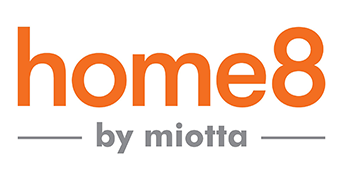News Source: http://www.cnet.com/news/next-health-wearable-your-home/
Connected health devices typically surround your wrist, but connected health may soon surround you in a much bigger way as the home becomes the biggest health device of all.
“We have more data from sensors about what’s going on in the home than almost anyone else in America,” Don Boerema, chief corporate development officer for home-security and health company ADT, said this week at a connected-health summit.
That data about how people are functioning “under the shingles” is still largely unseen, even to internet giants like Google and Facebook, yet it can have offer real health insights.
“If someone hasn’t gotten out of bed, left the house for a while or has increased bathroom frequency, they’re headed for a crash,” according to Lainie Muller, director of wellness for Alarm.com, a maker of smart gadgets for the home. Other experts speaking at the Parks Associates Connected Health Summit largely agreed that such indicators can accurately predict acute health problems as much as 30 days out.
MivaTek is pitching a version of its Home8 smart home kit for “medication adherence” that uses cameras, motion detectors, a pendant panic button and a tilt-sensing smart pill dispenser to get a read on how an elderly or recovering person is progressing. “You can monitor all these important behaviors plus use video to see if someone actually took their pills or just moved the dispenser,” said MivaTek VP of Sales Daniel Wong.
ADT, Alarm.com and MivaTek have something notable in common: Each is primarily in the home security business but now trying to stretch their existing infrastructure to serve connected health, a sector that combines the sexiness of home automation with a whiff of the $3 trillion annual health spend in the US.
Alarm.com’s wellness vision includes family monitoring when home care providers are either unavailable, unaffordable or unwelcome.
Alarm.com
“We’re repurposing those sensors for an even better [return on investment]” said ADT’s Boerema, who adds that his company now formats its home data to interchange with the major Electronic Medical Records (EMR) providers, which manage virtually every American’s medical information on behalf of doctors and hospitals.
Like almost everything else in connected health, there’s a major emphasis on cost control. “Tech-enabled care can cover at least some of the time, where a home care provider would cost an average $19 to $26 per hour,” Alarm.com’s Muller said. And in many cases the gear is already installed.
How the monitored person will feel about all this is a major acceptance factor. In-home monitoring could afford a degree of privacy that’s lost with home care providers, or it could just be the newest rite of passage into lonely infirmity. “At some point it will be like the ‘car keys conversation,'” admits Alarm.com’s Muller.
Regardless of patient age there is agreement that home health monitoring has to be fun, or at least easy. “I hear three things going on here: User experience, user experience, user experience,” summarized Parks Associates analyst Brad Russell. Alarm.com’s Muller agrees that “if you want to drive adoption, use the models consumers are used to. Look at the phone.”
Or look at the TV: Independa sells customized LG televisions that bring seniors video chat, photo sharing and messaging as a home wellness play. “We leverage the TV because everyone knows how to use a remote control,” said Independa CEO Kian Saneii. Those functions can be accomplished with any smartphone or tablet, but Independa adds on-screen medication reminders and a call for help button.
For now these home tech players can use their installed sensor base and resulting data to get a foot in the health care door, but eventually they’ll succeed on how well they write algorithms that predict a person’s state of health before it gets expensive. That includes reliable sensor data, transparent algorithms the Food and Drug Administration and medical providers can vet, and being able to tell one person from another in a multiperson household, an aspect of smart home tech that’s nascent at best.
Hurdles aside, the market seems ripe for fresh ideas. “With all of today’s tech, the No. 1 brand in elder care is still ‘I’ve fallen and I can’t get up,’ followed by The Clapper,” notes Independa’s Saneii. “We can do better.”



Get Social